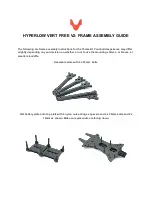
• Read all instructions on both sides of this
sheet first.
• Plan all component locations carefully.
• For use with 347 VAC only
• Install in accordance with ALL local codes.
• For indoor use only.
General Information
Technology:
Passive Infrared (PIR)
Electrical Ratings:
347 VAC
:
• Incandescent/Tungsten – Max. load: 4.3 amps,
1500W, 50/60 Hz
• Fluorescent/Ballast – Max. load: 4.3 amps,
1500W, 50/60 Hz
Motor Load: ¼ HP @ 125 VAC
Time Delays:
Self-Adjusting, 15 seconds/test (10 min
Auto), Selectable 5, 15, 30 minutes
Operating Environment:
• Temperature: 32° F – 104° F (0° C – 40° C)
• Relative Humidity: 20% to 90% non-condensing
• For indoor use only
Coverage:
Major Motion - 1000 sq. ft.
Minor Motion - 300 sq. ft.
Light Level Sensing:
0 to 200 foot-candles
Housing:
• Durable, injection-molded housing. Polycarbon-
ate resin complies with UL94V0.
Size:
•
Mounting Plate Dimensions:
4.195" H x 1.732" W (106.553 mm x 44 mm)
•
Product Housing Dimensions:
2.618" H x 1.752" W x 1.9" D (66.5 mm x 44.5 mm
x 48.26 mm)
LED Indicators:
Red indicates PIR detection
Operating Modes:
• Automatic ON/Automatic OFF
• Manual ON/Automatic OFF
Specifications
Description
The WIR-10-SR-C-D Occupancy Sensing Wall Switch is a Passive Infrared (PIR) motion sensing light-
ing control and conventional Wall Switch all-in-one, used for energy savings and convenience.
PIR Technology
The sensor’s segmented lens divides the field of view into sensor zones, and detects the changes in
temperature that are created when a person, or part of a person as small as a hand, passes into or
out of a sensor zone.
The WIR-10-SR-C-D allows the control of one load with one occupancy sensor switch.
The sensor can be configured to enhance energy savings by setting the unit for manual ON opera-
tion.
In Automatic ON Mode, the lights turn ON automatically when a person enters the room. In Manual
ON Mode, the lights are turned ON by pressing the pushbutton. In either mode, the lights stay ON as
long as the sensor detects motion in the room. When the room is vacated, the lights turn OFF auto-
matically after a preset Time Delay interval.
The sensor includes self-adaptive technology that continually adjusts to conditions by adjusting sen-
sitivity and Time Delay in Real-time. By adjusting sensitivity and Time Delay automatically, the sensor
is maximizing the potential energy savings that are available in the particular application.
The Daylighting feature prevents lights from turning ON, when the room is adequately illuminated by
natural light.
Walk-Through feature maximizes energy savings by not leaving the lights ON after a momentary oc-
cupancy. The sensor will switch the lights ON when it detects a person entering the area. If the sen-
sor does not continue to detect motion 20 seconds following the initial activation, it will
automatically go to a shorter 2 minute Time Delay.
Coverage
Location
When installing the WIR-10-SR-C-D in a new junction box, choose the switch location
carefully to provide optimum coverage of the occupied area. When replacing an exist-
ing Wall Switch, bear in mind that there must be a clear Line-of-sight between the sen-
sor and the area to be covered. Avoid pointing the WIR-10-SR-C-D directly into the
hallway where it may detect passers-by.
Installation
NOTE
: Before you begin, read these instructions completely and carefully.
Wiring
WIR-10-SR-C-D-W
WIR-10-SR-C-D-V
WIR-10-SR-C-D-A
WIR-10-SR-C-D-G
WIR-10-SR-C-D-B
Model #
The WIR-10-SR-C-D is designed for offices up to 300 square feet. Coverage testing has been per-
formed according to the NEMA WD7 Guideline.
The WIR-10-SR-C-D can be installed in
any standard single gang box. It may
be installed in the same manner as an
ordinary Wall Switch.
• Wire the WIR-10-SR-C-D as de-
scribed in the wiring section.
• Mount the WIR-10-SR-C-D in the
junction box.
CAUTION: Before installing or performing any service on a GE system, the power MUST be turned
off at the branch circuit breaker. According to NEC 240-83(d), if the branch circuit breaker is
used as the main switch for a fluorescent lighting circuit, the circuit breaker should be marked
“SWD.” All installations should be in compliance with the National Electric Code and all state
and local codes.
NOTE REGARDING COMPACT FLUORESCENT LAMPS: The life of some compact fluorescent
lamps (CFLs) is shortened by frequent automatic or manual switching. Check with CFL and ballast
manufacturer to determine the effects of cycling.
1. Make sure power is turned off at the branch circuit breaker.
2. Wire units as shown in wiring diagrams per applicable voltage requirements.
3. Mount unit to Wall Box.
4. Turn power back ON at the branch circuit breaker and wait 2 minutes for the unit to stabilize.
5. Make necessary adjustments. (See Checkout and Adjustments section)
6. Install Wall Switch plate.
,
36
20
,
Maximum coverage area may
vary somewhat according to room
shape and the presence of obstacles.
8
,
Minor Motion, IR
Major Motion, IR
LOAD
347 VAC
BLACK
BLUE
NEUTRAL
GROUND
GREEN
Wiring Diagram 1: 347 VAC single level single circuit wiring diagram
347 VAC
BLACK
BLUE
NEUTRAL
GROUND
GREEN
LOAD 1
LOAD 2
Wiring Diagram 2: 347 VAC single level switch dual level wiring using a toggle switch wiring
dia-
gram
Passive Infrared Line Voltage Wallbox Occupancy Sensor (Ground Required)
INSTALLATION INSTRUCTIONS




















